'With Pakistan's 'first use doctrine' threatening the use of nuclear weapons early in a war with India, the S-400 will shield vulnerable targets like Delhi and Mumbai, complicating Pakistan's targeting calculations,' says Ajai Shukla.
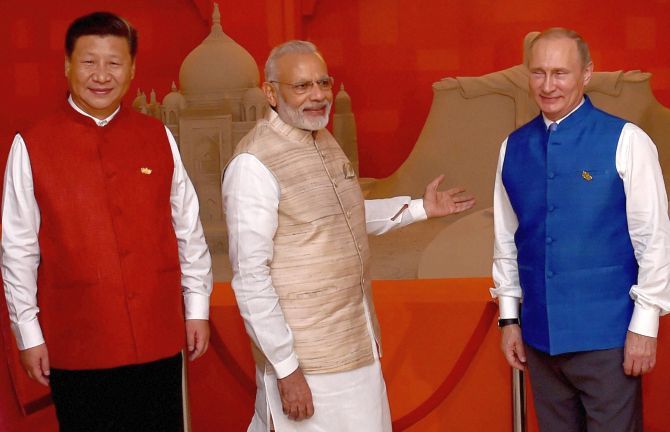
There was an unaccustomed chill between 'special and privileged strategic partners,' Russia and India as the 17th Russia-India annual summit meeting between President Vladimir Putin and Prime Minister Narendra Modi kicked off in Goa on October 15.
Just days earlier, Russia had held its first-ever joint military exercise with Pakistan, disregarding repeated Indian warnings.
New Delhi had twice conveyed its concerns to none less than Dmitry Rogozin, Russia's deputy prime minister who also oversees the defence industry: First when he met Modi on August 20, and again in a meeting with Foreign Minister Sushma Swaraj on September 13.
Following that, National Security Advisor Ajit Doval told his Russian counterpart, at a meeting of security chiefs of the BRICS countries, that going ahead with the exercise would offend India.
Inexplicably, Moscow concluded it was too late to call off the exercise, even as the pressure to cancel mounted after the Uri attack on September 30.
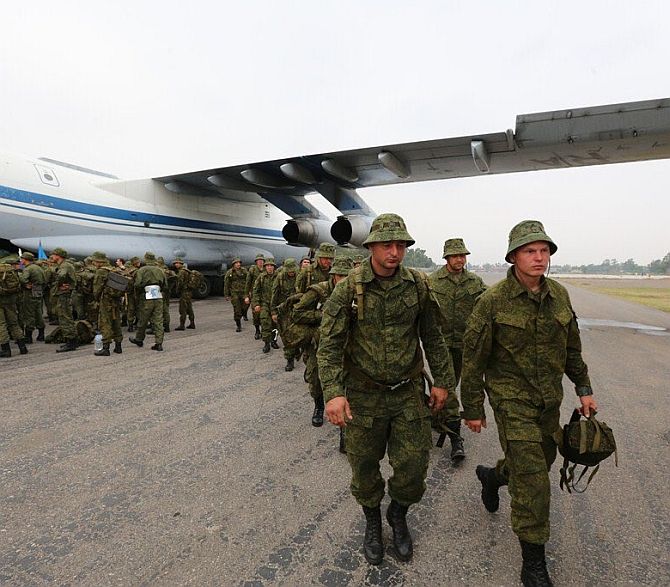
Russian officials ruefully ascribe it to flat-footed decision-making. A senior Russian diplomat accepts: "It was a stupid decision that ran counter to the spirit of the relationship. This (joint Russia-Pakistan military training) will never happen again."
Russia's ambassador to New Delhi, Alexander Kadakin, reportedly apprised Putin that Indo-Russian relations had been badly bruised.
Yet, so deep is the strategic cooperation between New Delhi and Moscow that the chill quickly evaporated in a rush of important agreements at Goa.
Besides agreements on two more Russian nuclear reactors that will take the numbers at Kudankulam up to six, the two leaders spoke of eight more Russian reactors over the next two decades.
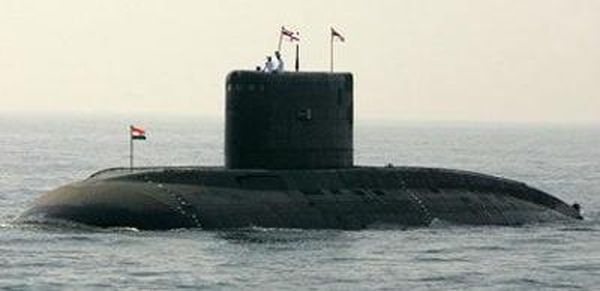
As always, arms trade continues to be a pillar of the relationship.
Agreements were signed for India's acquisition of the S-400 Triumf air defence system; and four Grigorivich-class stealth frigates to supplement six Krivak-class vessels that India had bought earlier.
A shareholders' agreement was signed for a joint venture between Hindustan Aeronautics and Russian Helicopters to build Kamov-226T multi-purpose helicopters in India.
A target date was announced for signing a contract for jointly developing the Fifth Generation Fighter Aircraft for the Indian Air Force, an evolution of the T-50 fighter that Sukhoi is already test flying.
As always between Russia and India, nothing was publicly said about more sensitive areas of cooperation such as the negotiations for India to lease a second Akula-class nuclear submarine, which will join the Indian Navy by 2020-2021 to replace its predecessor, the INS Chakra
Nor was there any mention of another key area of cooperation: Russian consultancy in the Indian programme to develop and build four to six nuclear-powered attack submarines.
Russian assistance had earlier proved valuable in the development of INS Arihant, a nuclear-powered ballistic missile submarine that now constitutes the third leg of India's nuclear triad.
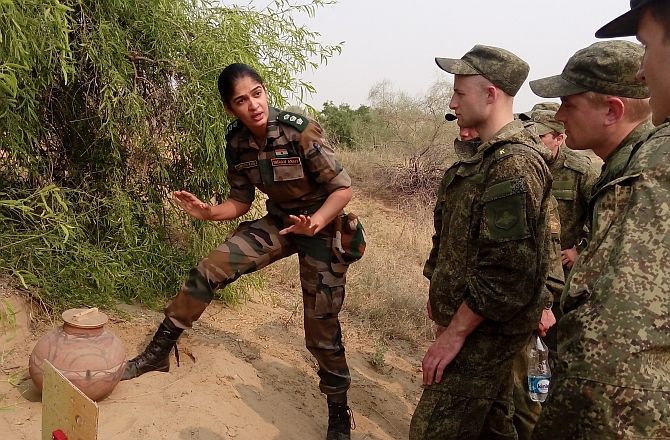
Cooperation in such strategic areas provides Moscow its remarkable leverage in New Delhi.
But New Delhi is equally important for Russia. It is sometimes forgotten that Russia's sprawling defence R&D establishment and industry only survived the collapse of the Soviet Union due to India's patronage.
In the 1990s, with Russia disintegrating, an opportunistic Beijing was poaching unemployed Russian weapon designers to build the Chinese defence industry.
New Delhi, in contrast, placed orders for a range of weapons systems -- the Sukhoi-30MKI and MiG-29K fighters, three Talwar-class frigates, and the upgrade of MiG-21 fighters -- which provided the lifeline that kept these design bureaus alive.
The inter-governmental agreement for the S-400 Triumf anti-aircraft and anti-missile defence platform, called the SA-21 Growler in NATO terminology, can be regarded as the summit's showpiece defence signing.
India is looking to buy five systems, off-the-shelf, without any 'Make in India' component, for a price that is still to be negotiated, but is estimated at Rs 30,000 crore (Rs 30 billion).
The S-400 detects and destroys incoming ballistic missiles, including those tipped with nuclear warheads, at ranges of up to 230 kilometres.
With Pakistan's 'first use doctrine' threatening the use of nuclear weapons early in a war with India, the S-400 would shield vulnerable targets like Delhi and Mumbai, complicating Pakistan's targeting calculations.
An indigenous anti-ballistic missile system that the Defence R&D Organisation is developing is still some years from deployment.
The S-400 too will take at least three years to join India's military.
TASS reports that Sergey Chemezov, the chief of Rostec, which oversees Russian high-technology projects, said: '(We) are hopeful that, in the first half of 2017, we will finish and sign these contracts (with India) to start production. I think that supply will start in about 2020.'
Chemezov also revealed that Russia would supply India two ready-built Grigorivich-class frigates (also termed Project 1135.6), while an Indian shipyard would build the next two with Russian cooperation.
Reliance Defence is the hot contender to build these at its Pipavav Shipyard, since the public sector Mazagon Dock and Garden Reach Shipbuilders & Engineers are both already loaded with other orders for frigates and destroyers.
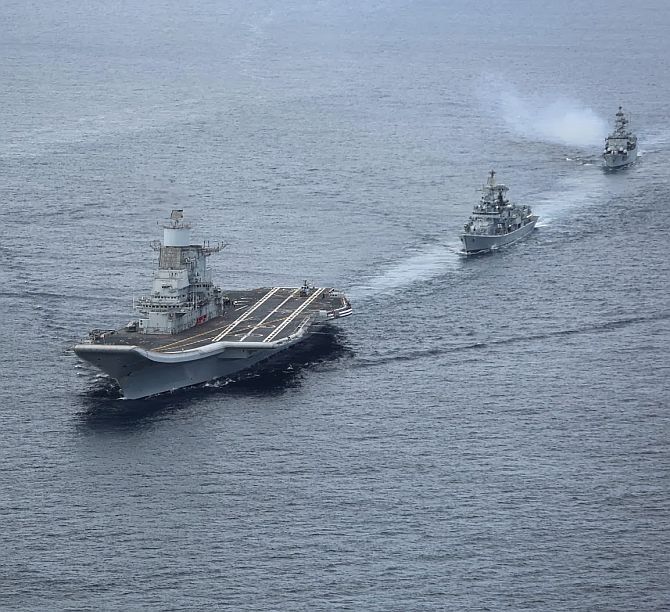
Both countries stand to benefit. Russia's frigates, lying half-built at Yantar shipyard, are stalled by Ukraine's refusal to supply the Zorya turbines they were designed for.
After Russia annexed Crimea, its relations with Ukraine remain in deep freeze, but Kiev has confirmed it is willing to supply India the engines.
India benefits in turn by obtaining four frigates in half the time it would take to build them in India.
With the navy fielding just 140 warships against a requirement of 198, it welcomes the quick delivery of four new frigates of a type already in service.
Chemezov, as well as Indian sources, say the "research & development" contract for creating the Fifth Generation Fighter Aircraft could be signed before the end of the year.
"We have almost finished all negotiations and are ready to sign; only formalities remain," he says.
Sukhoi and HAL will partner in developing Sukhoi's current T-50 fighter into a more capable aircraft, built to the IAF's specifications.
The IAF remains vague about how many it would eventually build. The decision would probably depend upon how the aircraft shapes up.
The Goa summit saw the signing of a tripartite 'shareholders' agreement' between HAL, Russian Helicopters, and defence export agency, Rosoboronexport, to deliver 200 Kamov-226T helicopters to India.
The JV will have a 50.5 per cent majority stake for HAL and a 49.5 per cent stake for Russian Helicopters.
An inter-governmental agreement, signed in Moscow during the 16th Annual Summit last December, specifies that the helicopters will be delivered within nine years of the signature of the contract.
The delivery for the first 40 helicopters, which would be built in Russia, would start in 2017–2018. After that, production would be incrementally shifted to India.
Besides these arms deals, Russia is pushing for a planning body, along the lines of the US-India Defence Trade and Technology Initiative, which can bring together military planners and defence industry from both sides in collaborative ventures.
ARMED FORCES FEEL THE WARMTH
- S-400 TRIUMF ANTI-AIRCRAFT AND ANTI-MISSILE DEFENCE PLATFORM: This will have capabilities to destroy missiles, including those tipped with nuclear warheads.
- FOUR GRIGORIVICH-CLASS STEALTH FRIGATES: These would be acquired in half the time it would take to build them in India.
- KAMOV-226T MULTI-PURPOSE HELICOPTERS: The helicopters will be jointly developed by Hindustan Aeronautics and Russian Helicopters in India.
- FIFTH GENERATION FIGHTER AIRCRAFT: An evolution of the T-50 fighter that Sukhoi is already test flying will be developed jointly with India.



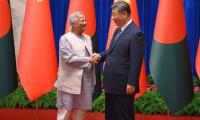








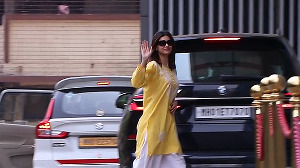
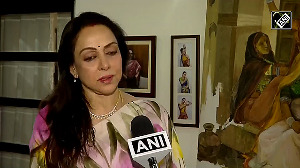

 © 2025
© 2025